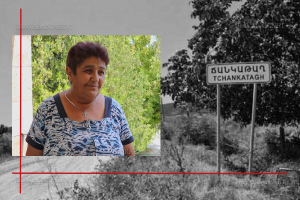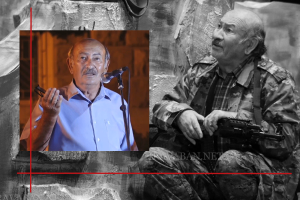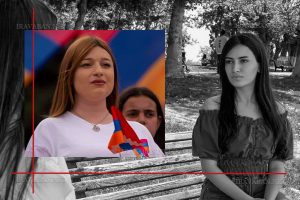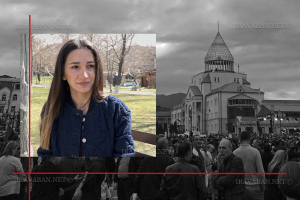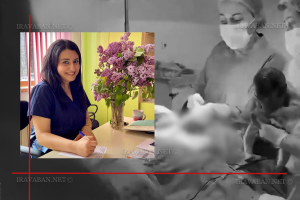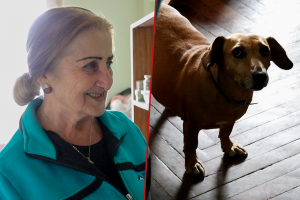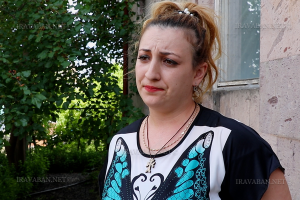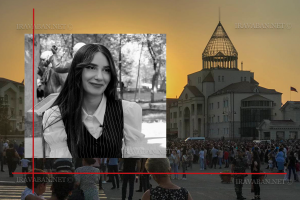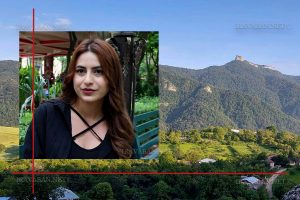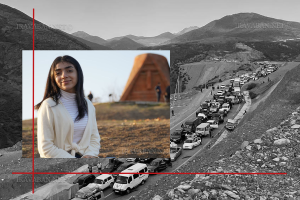Galina Minasyan, forcibly displaced from the occupied Republic of Artsakh, told in the framework of “Artsakh: Armenian Genocide 2023. Stories of Survivors” documentary project how they lived side by side with the enemy for almost 3 years after the 44-day war unleashed by Azerbaijan in 2020.
“There was fear, but we simply trusted in the army. We were more afraid at night, the men of the village went to defend their positions,” she says.
Galina worked as a teacher. She notes that they more or less managed to organize the school processes during the blockade.
“Whoever didn’t have stationery, we teachers helped them to at least not fall too far behind in class. The class hours were shortened, there was a problem with food when there was no blockade, the children brought food with them and endured for 45 minutes, but then the duration of the lesson was changed to 30 minutes,” our interlocutor notes.
According to her, the Azerbaijani side regularly violated the ceasefire regime.
“The arable fields were next to the lower part of the village, the enemy was located immediately after the arable fields where their positions were set. They did not allow to sow wheat in those lands. Once the tractor was working and they shot at it, we were coming home from school and heard the sound, we learned that they shot at that tractor and did not let to sow the wheat. The fields were plowed, but we could not sow,” Galina Minasyan said.
On 19 September, 2023, she was at school when the Azerbaijani side unleashed another aggression.
“Military men came to the school yard and said, ‘the situation is serious, alarm of number one has been announced.’ We asked if we should continue the classes, they said that it would be better for the children to go to their parents, because the school did not have a basement. The children were taken out, the school staff left and we went home. We were at home when the fight started. We stayed in the basement for a few hours, and then they came and took all of us out of the village. On 20 September, we moved to Stepanakert. There they told us not to be afraid, the fight will end, but there we learned that everything has been surrendered. We stayed in Stepanakert for several days. On 24 September, we learned that Martakert region is under siege,” she said.
Our interlocutor says that they did not take anything with them, because it was not possible to return to the village.
Galina Minasyan emphasizes that it is not possible to return to Artsakh and live under the conditions offered by the Azerbaijani side.
Currently her family has a number of difficulties. She works at school again. She has received the offer from the director of Arevashat school. She was excited and said that she did not manage to accept the offer right then, but she was given a month..
“Artsakh: Armenian Genocide 2023. Stories of Survivors” documentary project of Iravaban.net is aimed at collecting the memories and testimonies of citizens forcibly displaced from Artsakh occupied by Azerbaijan, about the genocide of the Armenians of Artsakh committed by Azerbaijan, atrocities, the days of war, the path of deportation, etc.
Iravaban.net seeks help from citizens who will voluntarily agree to translate materials into different languages: Russian, English, French, Arabic, Persian, Turkish, Georgian, Chinese…
You can write to our e-mail address at: [email protected]
To donate for realization of the project: https://iravaban.net/en/become-a-supporter
Armenian Lawyers’ Association is the author of the idea “Artsakh: Armenian Genocide 2023. Stories of Survivors” documentary project of Iravaban.net and is the owner of copyright of the materials created within the framework of the project. In case of using the materials produced within the framework of the project, it is necessary to obtain the written permission of the Armenian Lawyers’ Association.
Details in the video.
Hasmik Sargsyan

